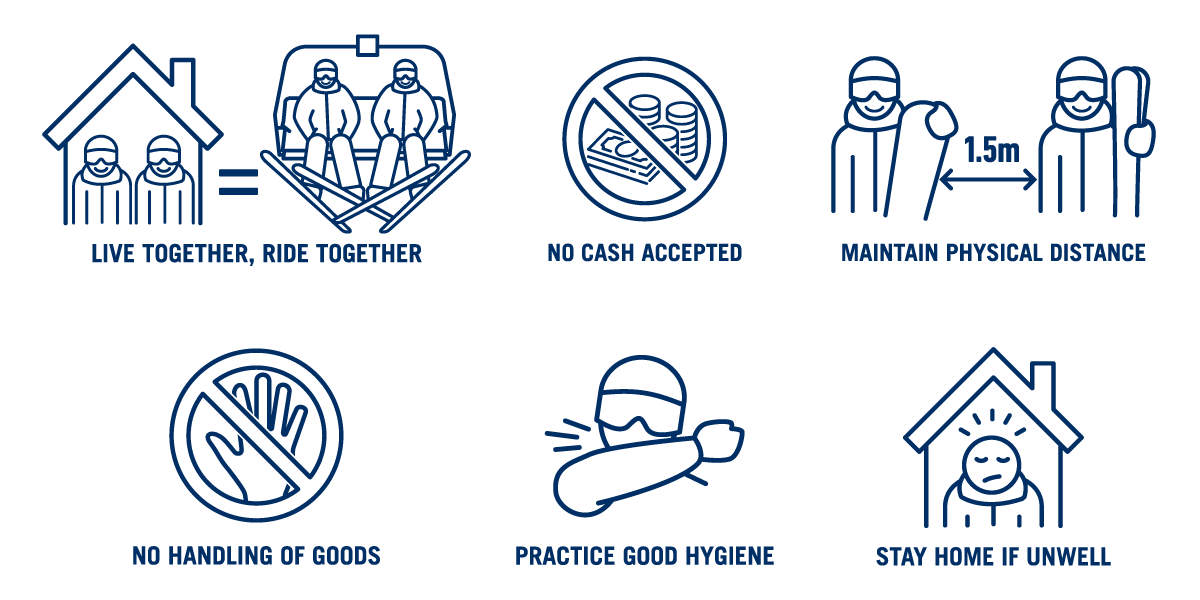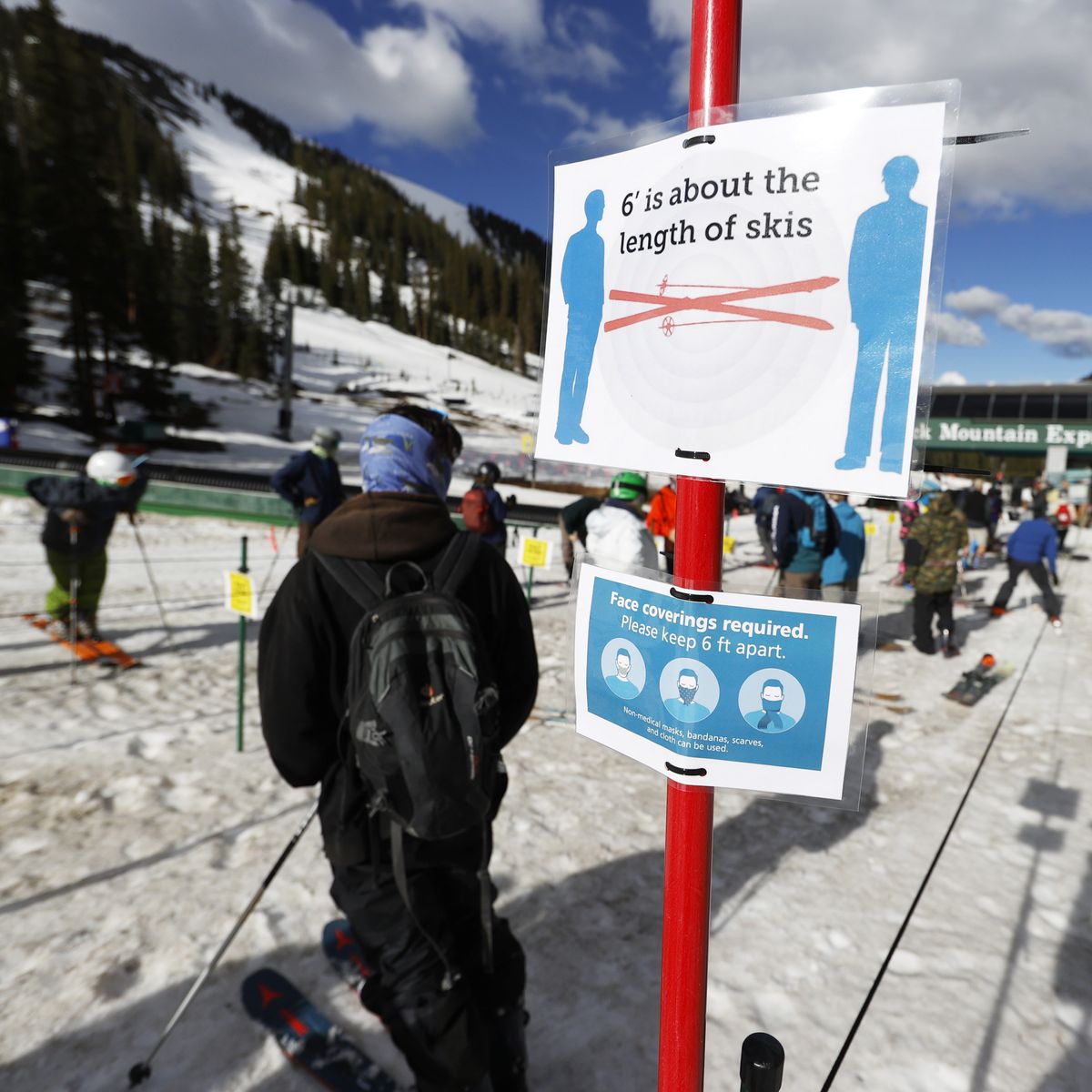
As the 2020/21 ski season creeps closer, we are slowly getting a clearer image of what our skiing ‘normal’ is going to look like for the foreseeable future as resorts across the world test out different COVID-19 safety procedures. So far, prominent resorts that have reopened and/or are currently open include Arapahoe Basin CO, Timberline OR, Beartooth Basin WY, Crystal Mountain Resort WA, many resorts in Argentina, New Zealand, and more. From their experiences and press releases from other organizations such as Vail Resorts and Aspen Snowmass, these are the main takeaways to prepare for what next season is going to look like:
- Since skis are about 6 feet from tip-to-tail, social distancing while skiing and standing in line for the lifts doesn’t seem to be much of an issue so far, as long as you only stand next to people from your household/cohort/bubble.
- Most resorts are limiting capacity and many have stopped selling same-day tickets, so be sure to check online to see if you need to purchase a pass ahead of time or reserve a time slot on the hill.
- As expected, chairlifts and gondolas are limited to members of the same household group to ensure social distancing.
- Masks are mandatory almost everywhere, but since many people ski and ride with a facemask, scarf, or buff to protect from the cold already, this isn’t much of an annoyance.
- The most dangerous part of the day will likely be lunchtime, as the crowded cafeterias filled with people not wearing masks will pose the greatest risk of spreading COVID-19. As a result, food options are being limited, with most resorts only offering takeout or very limited indoor seating, so you might want to bring your own lunch and be prepared to eat outside.
- Most companies are offering increased insurance and security on season passes, so you can still buy a pass and be financially protected if ski resorts are shut down again.
- You will likely be asked the usual COVID-19 questions upon arrival at the hill: if you have been in contact with anyone who is COVID positive, if you have any symptoms, if you have travelled recently, etc.
- Understandably but unfortunately, many events at resorts across the world have been canceled or postponed, so we will have to see how the next few months play out in order to get a better idea of what we can expect to go on or not.
- Some resorts will not be fully operating as they usually do due to the financial impact of the pandemic, meaning that resorts that used to be open all week may now only be open on the weekends, so be sure to check online before heading to the slopes.

The biggest thing in common between every resort’s statements about their plans for operating during COVID is their overarching commitment to safety. As Vail Resorts CEO Rob Katz said in a statement on the 29th of July,
“All of us want to protect our local economies and our communities. All of us want a great ski and snowboard season. To make that a reality – all of us must remain vigilant. Together, let’s set a tone and demonstrate that we are leaders in offering the safest and most enjoyable experience, anywhere in the world.”
We can’t wait to get back on the slopes just as much as you, but nothing is more important than the health and safety of ourselves, our family, friends, and community, so for that reason, we much be prepared and willing to help enforce the measures recommended by our health professionals to ensure a safe and enjoyable ski season for everyone.